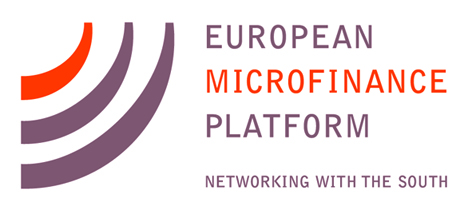Deborah  Drake of Accion’s CFI opened a European Microfinance Week session on crises in microfinance by noting that the effect of COVID-19 on the financial inclusion industry “is a different crisis because it is global.” In past crises, which were centered on a single economy, microfinance investors had sufficient capacity to inject into stronger institutions to help them survive. The global nature of the current downturn, however, may exceed the capacity of investors to sustain “worthy” financial services providers (FSPs) in certain markets. “There is inevitable consolidation that will take place,” Ms Drake argues.
Drake of Accion’s CFI opened a European Microfinance Week session on crises in microfinance by noting that the effect of COVID-19 on the financial inclusion industry “is a different crisis because it is global.” In past crises, which were centered on a single economy, microfinance investors had sufficient capacity to inject into stronger institutions to help them survive. The global nature of the current downturn, however, may exceed the capacity of investors to sustain “worthy” financial services providers (FSPs) in certain markets. “There is inevitable consolidation that will take place,” Ms Drake argues.
Donna Nails of Finex BH Consulting described her work training FSP staff to review each borrower’s ability to make loan payments at the current time and her or his willingness to repay even a small amount on a regular basis. This can include income from the business activity funded by the FSP or other income. Ms Nails explained that this process was key in helping Bosnian FSPs survive the microfinance downturn that began there in 2008.
Daniel Rozas of the European Microfinance Platform (e-MFP) agreed that – while the crisis is affecting sectors very differently – the effects are very client-centric. Hence he suggests drilling down in the data to the borrower level to group clients by their repayment performance since April. This can assist with both collections and deciding where to continue lending, which is critical to cash flow. Ms Nails does analysis this using a grid in a “heat map” format.
Regarding the caution warranted in issuing fresh loans, Ms Drake noted the example of an FSP that has changed its incentive structure for loan officers to reward collections rather than volume of new loans. Ms Nails suggested monitoring the repayment of new loans very closely. Rather than the usual 30-day metric, she says, “They shouldn’t be one day late.” Ms Nails also argued against lending to new clients and via new products. However, Mr Rozas cited the example of an FSP in Kazakhstan that was having trouble with collections during a financial crisis 10 years ago. Repayments on loans to small and medium-sized enterprises as well as housing loans were low. Meanwhile, by chance, one branch of the FSP had begun experimenting with group lending just before the broader drop in repayment. The group loans performed well, and the FSP expanded the product across its network. This played a major role in helping the FSP whether the economic downturn.
Regarding the difficulty FSPs are having in complying with capital adequacy requirements, Mr Rozas argued that regulators are unlikely to shut down large numbers of institutions. However, if a small number of poor performers stand out from the market, regulators may choose to take action. Investors may be forced to convert debt to equity, he added, noting that this parallels the resolution of the crisis in the Indian state of Andhra Pradesh, which began in 2010. Mr Rozas says, “Nobody wants to talk about it, but for markets that are really hard hit, I could see this happening” as a result of COVID-19.
Ms Drake said that CFI case studies indicate that many FSPs will shrink. Ms Nails argued that CFOs of FSPs tend to understand this as the price of survival, while CEOs tend to be quite resistant to the idea. Mr Rozas predicts that investors will be ready to put more equity into FSPs when they start growing again, but that may not be until 3 years to 4 years from now.
Regarding FSP survival, Mr Rozas argued that a common theme among FSPs that survived past crises was their transparency with investors. This led to investors being more transparent, in turn. FSPs that were not transparent did not survive, he says. Foreseeing continued difficulties ahead, Ms Nails said, “The stress tests scare me. The delinquencies are coming in 2020 and 2021.”
In the closing portion of the session, Ivo Jenik of CGAP described a crisis management “roadmap” that his team is building. The document, which is due for release during December, targets smaller FSPs. It includes suggested actions and targets, with links to 200 other documents and tools from past crises as well as the current one.
This feature is part of a sponsored series on European Microfinance Week 2020, which took place online from November 18 through November 20. The event is held annually by e-MFP. MicroCapital has been engaged to promote and report on the conference each year since 2012.
Sources and Additional Resources
European Microfinance Platform (e-MFP) information on European Microfinance Week 2020
http://www.e-mfp.eu/european-microfinance-week-2020
MicroCapital coverage of European Microfinance Week, including the European Microfinance Award
https://www.microcapital.org/category/european-microfinance-week/
Similar Posts:
- SPECIAL REPORT: European Microfinance Week 2023 Opens With Action Group Meetings, Including Investors Sharing Strategies for Measuring Social Performance #EMW2023
- SPECIAL REPORT: Green Action Group Celebrates 10th Anniversary at European Microfinance Week #EMW2023
- SPECIAL REPORT: e-MFP Green Inclusive and Climate Smart Finance Action Group Focuses on Capacity Building
- MICROFINANCE PAPER WRAP-UP: “State of the Art of Green Inclusive Finance 2011-2019: Worldwide Status and Progress Over 10 Years,” by e-MFP Green Inclusive and Climate Smart Finance Action Group
- SPECIAL REPORT: How to Achieve Responsible Digital Financial Services: European Microfinance Week Opens
